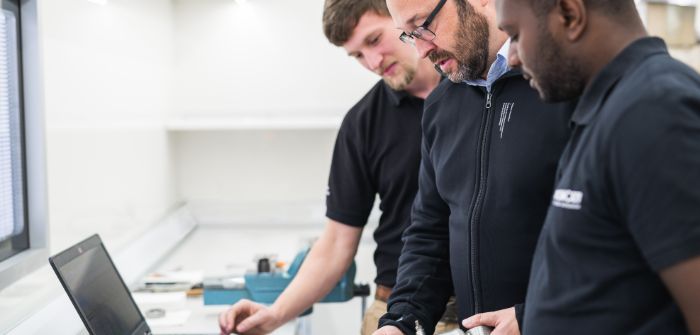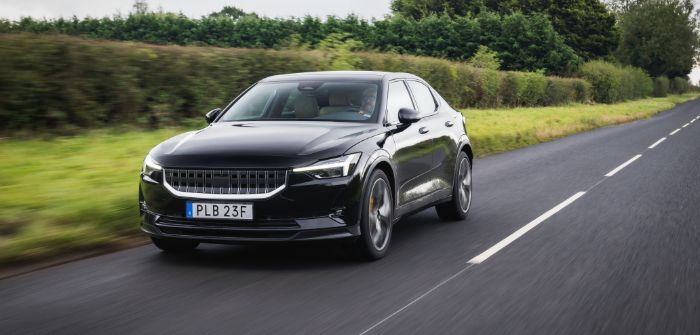Polestar’s first mass-market product is the result of an extensive global development program leveraging synergies with the Volvo Cars Group.
Having set out its stall with a high-performance hybrid coupe last year, newly independent car maker Polestar is preparing to step into the mass market. The Polestar 2, a compact, BEV fastback, will take on the Tesla Model 3 when it launches in China, Europe and North America in the first half of 2020, which required the manufacturer to conduct a global development program and a rapid expansion of its engineering team as the project advanced.
Production is taking place in China, but development was rooted in Sweden. Head of R&D, Hans Pehrson, joined the project early in 2018 having been responsible for electric propulsion systems at Volvo Cars, taking up the role several months before his new employer moved into the bespoke ‘Polestar Cube’ headquarters in Gothenburg, adjacent to its parent company.
Prior experience meant he was familiar with the car’s foundations; the Polestar 2 can trace its roots back to the Volvo 40.2 concept car of 2017 and is based on the Compact Modular Architecture (CMA) used in the XC40 SUV, which is also due to get an electric variant later this year. Pehrson says this enabled a much quicker turnaround.
“By developing the technology with Volvo Cars we were able to use its long-standing experience and insight. Even before the program officially started, we had some early technology prototypes on the road. But though we use the CMA platform, we have been able to develop a vehicle with a distinct Polestar feel and experience,” Pehrson explains.
This required an overhaul of the vehicle architecture. Engineers redesigned everything in front of the firewall to suit its planned electric drivetrain, and the structure has been optimized elsewhere to deliver a more driver-focused character. Pehrson explains this was fast-tracked using simulation and makes full use of the need for a protective structure around the battery pack. Fitted under the cabin, the pack is a vital component of the Polestar 2’s structural rigidity, benefiting handling and agility while offering a 3.7dB reduction in NVH compared with a monocoque chassis.
Geely Auto Group (which owns Polestar and Volvo) is scaling up electrification across several of its brands, in turn offering economies of scale not usually accessible to a startup. Leveraging this advantage was crucial for keeping costs down – the new car costs three times less than the partially carbon fiber bodied Polestar 1. Battery cells were secured as part of wider partnerships with Volvo Cars, and are supplied by LG Chem for most markets, or CATL for China, while Siemens co-developed the e-motors used in the powertrain.
From launch, Polestar will offer a single 300kW (407bhp) variant with motors at each axle and a liquid-cooled 78kWh battery offering a range of 500km (310 miles) on the WLTP cycle or 442km (275 miles) on the EPA. Chinese-market versions will get a slightly smaller-capacity 72kWh battery pack with a similar range under NEDC test conditions.
Driver focus
Performance is a key brand value for Polestar and, as well as five-second sprints to 62mph (100km/h), Pehrson says a focal point of the development program was ensuring it offered a broader spread of talents than just straight-line speed. Its driving characteristics of predictability and balance were set out by Polestar 1 and prototypes were well traveled, with intensive testing at Volvo’s Hällered Proving Grounds in Sweden, and further calibration and validation work all over Europe, North America, China and South Africa.
The brand’s lead chassis engineer and chief test driver Joakim Rydholm comments, “As with Polestar 1, we spent time in many environments around the world with Polestar 2, fine-tuning and testing lots of chassis attributes to find what we call ‘the golden ride’. This is the moment when we as chassis engineers find the ultimate configuration – a perfect balance between dampers, brakes, tires, steering and power delivery that gives us goosebumps.
“Each of our testing environments enables us to refine specific elements of the car and in different ways. The car should feel alive when negotiating a South African mountain pass, calm and confident when cruising at speed on a German autobahn, cool in Death Valley, cozy in the Arctic, and relaxed on a wet country lane in England. We don’t stop until we are satisfied.”
Technical partners
Brand-specific characteristics necessitating unique partnerships were formed for the newcomer. The Polestar 2 will be the world’s first vehicle to feature Google’s Android Automotive operating system as standard, and the OEM has made an emulator available to software developers, inviting them to invent additional features. It also built on relationships with the Polestar 1, including involvement from Swedish suspension manufacturer Öhlins to co-develop the optional Performance chassis pack for the car, including manually adjustable dampers, Brembo brakes and forged alloy wheels.
Pehrson notes, “We work very closely with our suppliers, which we choose because of their level of expertise. Everything is designed with the Polestar 2 in mind, so it’s important to work together. The best collaborations bring the best results for both.”
The very first tooling trial prototypes, built for final quality checks, were assembled in December at Geely’s Volvo-operated plant in Luqiao, China, alongside sister brand Lynk & Co’s 01 SUV and the XC40. Plans are underway to expand the facility’s on-site capability with an adjacent test track for development and validation work, with the aim of reducing transport requirements and minimizing the environmental impact of bringing new models to market.
In the meantime, the company is continuing to expand in Europe. An all-new R&D facility has opened in Coventry, UK, close to where fellow Geely subsidiary LEVC is developing an electric van and taxi. Newly appointed engineers were assigned roles at late stages of the Polestar 2 program to familiarize them with technologies destined for other products. An electric Polestar 3 SUV is already in the pipeline, and Pehrson says the stall set out by its earliest models is a hint of what to expect.
“Polestar’s role as a tech spearhead requires new skills in low-volume, lightweight, multimaterial vehicle engineering, and the UK operation will allow us to take the next steps toward our future cars.” he says.
By Alex Grant



